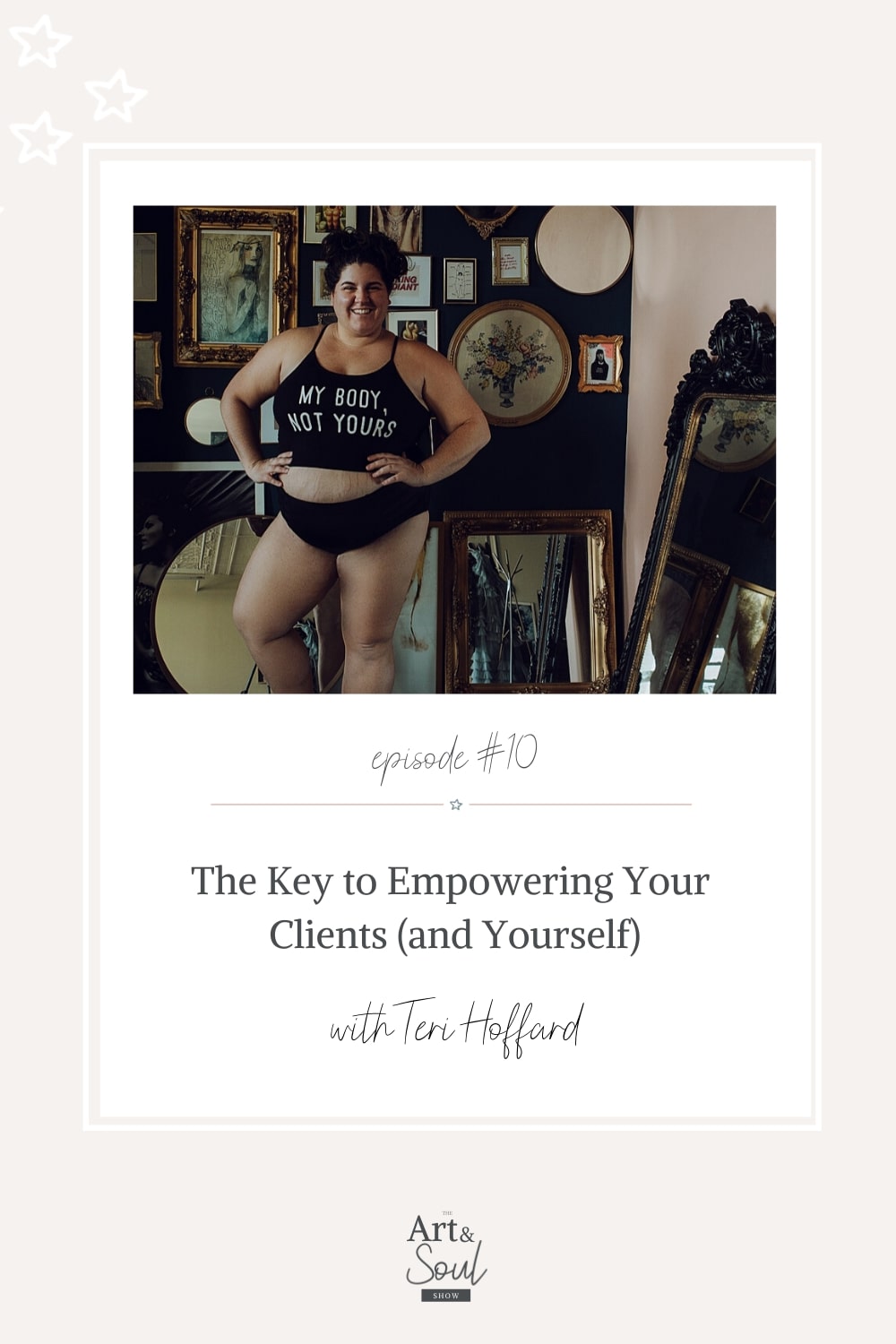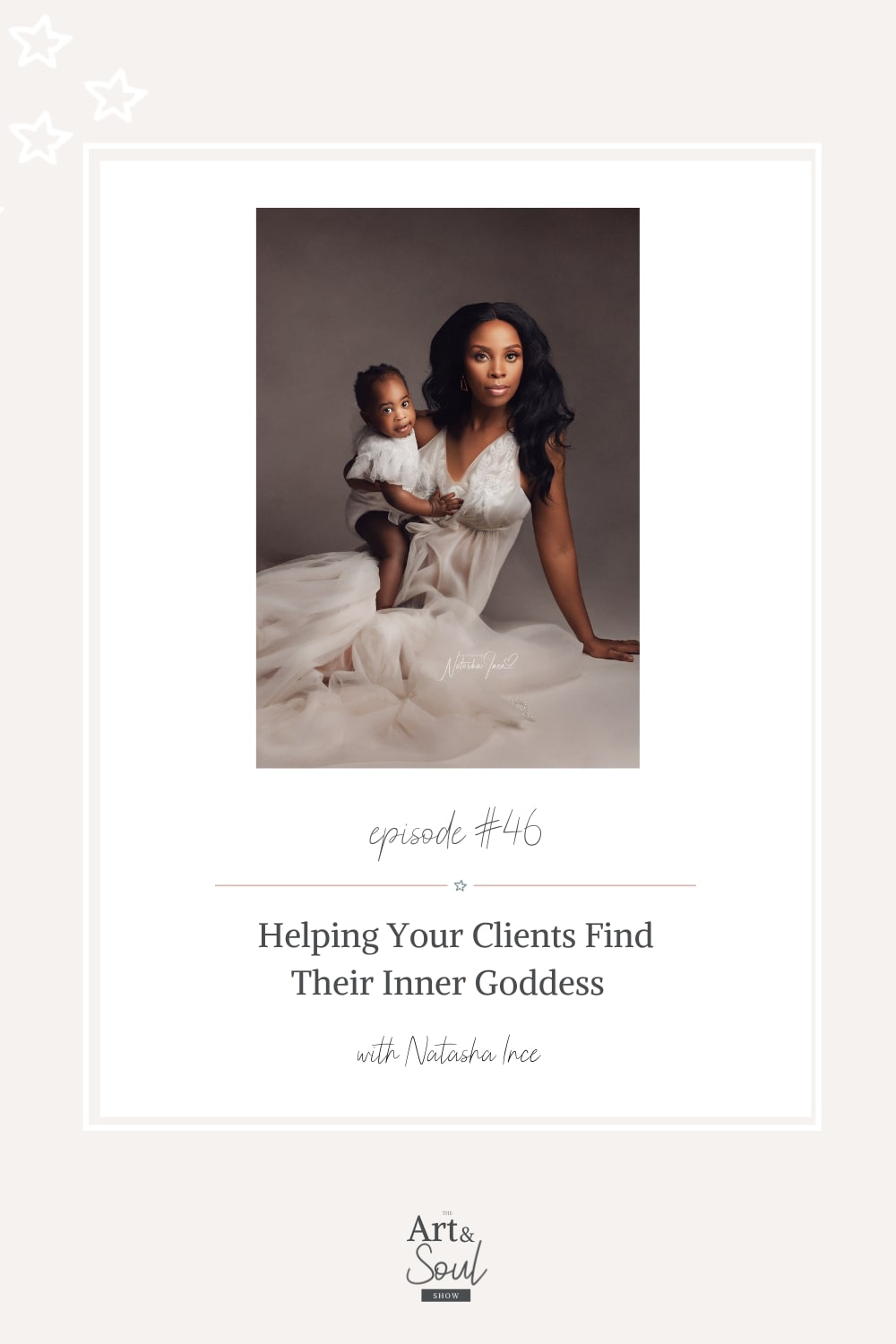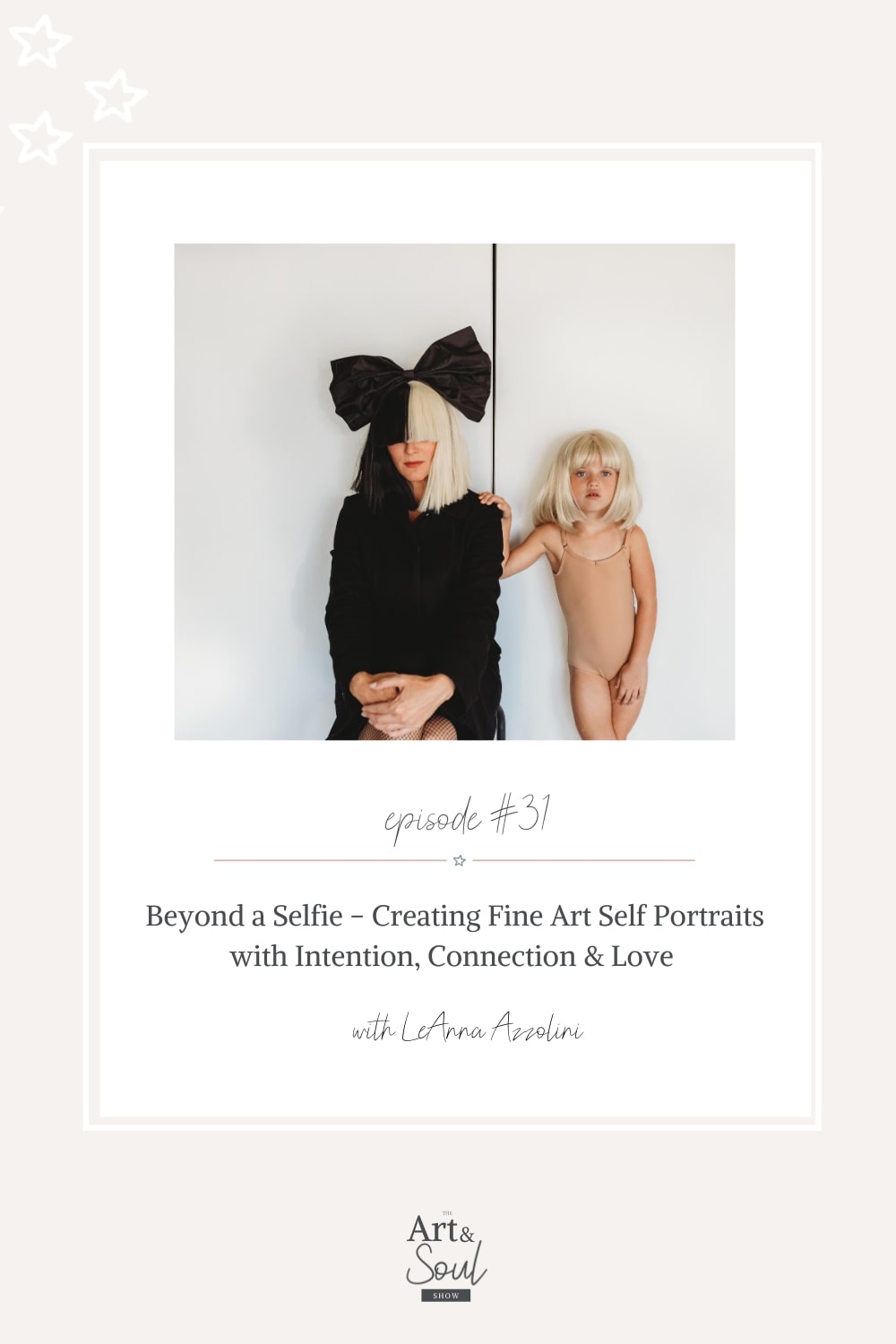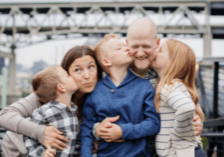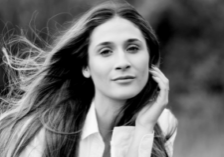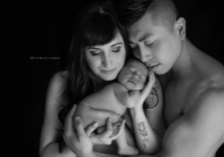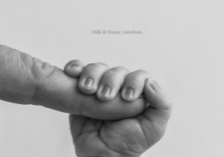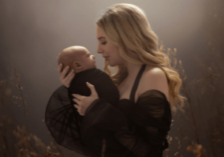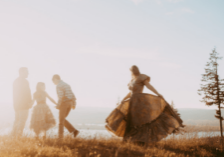Beyond the Body: Cultivating Self Love in Ourselves & Our Clients with Body Image Activist Teri Hofford
As photographers, we spend a lot of time interacting with the human body: posing it, photographing it, maybe even editing it. But sometimes, our feelings towards our own bodies can spill over into how we photograph others. As Teri explains in today’s episode, the trick to cultivating our own self love and empowering it in our clients isn’t to hyperfocus on the body but instead to capture our clients as whole, complex humans.

In this episode, I’m chatting about self love and liberation with inspirational speaker, award winning empowerment photographer, and body image activist Teri Hofford.
She’s sharing how you can practice self love in your photography business and empower your clients to love their own bodies. We’re talking about setting boundaries as a form of self love, and Teri is explaining why we should strive to photograph our subjects as whole humans, not just their bodies.
What’s in this episode:
- Teri’s passion for helping others improve their confidence and body image [2:28]
- How a lack of boundaries can hurt your self esteem and sense of self love [3:32]
- Understanding the root of your default behaviors and learning to say “no”[6:05]
- How to create a plan before you have to turn potential clients away [8:54]
- How a scarcity mindset about the future can lead to overworking yourself in the present [9:36]
- Making big, scary changes in your business because you know they’re right for you [11:11]
- Teri’s book about understanding body image and digging deeper into who you truly are [14:29]
- How to create self portraits as an act of self love [17:12]
- Why Teri took a step back from photographing clients and pivoted towards education [18:26]
- Why we crave time for passion projects and then get uncomfortable when we get that time [25:05]
- How to create systems for the things that are difficult but good for you [28:04]
- How to address body image with clients and go into your sessions with intention [33:41]
- Why “body positivity” is sometimes too focused on improving the body [39:45]
If you want to cultivate your own sense of self love and empower your clients to do the same, tune into this episode.
SUBSCRIBE: iTunes | Spotify | Stitcher
Resources Mentioned
Listen to my first episode with Teri all about empowering your clients
Learn more about Teri’s self love and self portrait course
Check out the book Atomic Habits by James Clear
Check out the book War of Art by Steven Pressfield
Meet Teri Hofford
Teri Hofford is an inspirational speaker, award winning empowerment photographer and body image activist based out of Winnipeg, Manitoba. After having been at both ends of the weight spectrum herself, Teri realized that achieving the “perfect” body was not the answer, but rather, finding contentment with the size and shape that one is at in the present is the key to feeling complete and confident. From this, Teri created an empowerment empire, which includes her photography business Teri Hofford Photography, BODY IMAGE BOOTCAMP (™), and everyBODIES Education, 3 resources which help women and photographers overcome their body image issues, so they can shift their focus from changing their bodies, to changing the world.
Connect with Teri
Did hearing from Teri about self love and body image get you excited to empower your own clients? Check out these other episodes
Transcript:
[00:00:00] Teri Hofford: And I know like “pivot”, such a word that came out of the pandemic. It’s not even pivoting it really, for me was just like taking stock of what had happened and then realizing like, Oh no, I am so far off my path. I’m walking on somebody else’s path right now, like, this is not this is great for them, but this isn’t what I wanted. No wonder I feel unfulfilled.
[00:00:27] Lisa DiGeso: Welcome to the Art and Soul show, where we dove into heart opening chats on photography, business life and that messy in between. I’m your host, Lisa DiGeso. So a mom, a photographer and entrepreneur, and I’ll be sharing honest conversations and advice for photographers with insight on mindset, entrepreneurship and creativity. The goal of this podcast is for you to be able to gain insights and strategies that will get you real results. Because let’s face it, having a photography business can be lonely, but it doesn’t have to be. This is the place you can go when you need a boost of encouragement, a kick in the pants and inspiration to pick up your camera. This is the Art and Soul show. Hello, my friend. Welcome back to the show. Now, first and foremost, I want to express my gratitude to you for showing up every single week, tuning in and committing to learning and growing in your photography business and your life. I am so truly honored and grateful. You dove into shows with me every week, so today I’m really excited sharing with you my conversation with Teri Hofford. Teri is an inspirational speaker, award winning empowerment photographer and body image activist based out of Winnipeg, Manitoba. Now, she was one of my very first interviews nearly 100 episodes ago, and I’m so excited to dove in and catch up with her. If you haven’t listened to her episode, it’s number 10. So if you want to head back and check it out, go in for a listen. I am so excited to share with you her wonderful heart and her wisdom. So without further ado, let’s dove in. Welcome back, Teri.
[00:02:05] Teri Hofford: Thanks for having me. I always love chatting with you. And yeah, seeing where we are that it wasn’t that long ago isn’t really like last year.
[00:02:13] Lisa DiGeso: I know I was looking. I was like, Yeah, I talked to her like last year and I was like, Wait a sec. No, we were like, You were number ten. You’re my 10th interview. And like, we’re just really like one hundred and ten almost now. So I was like, Yeah, that’s a cool thing. So cool to catch up. So for those that maybe didn’t listen to the previous show, can you share who you are and what you’re passionate about?
[00:02:35] Teri Hofford: Yeah, sure. My name is Teri Hofford and I’m a body image expert or educator, and I’m a photographer and an author and a speaker, and I do literally all the things that I can in order to help challenge individuals to kind of consider how their body image biases and beliefs might be impacting their work or even just their personal lives. And then how to overcome that? Yeah, that’s me in a nutshell.
[00:03:01] Lisa DiGeso: I love that. I love that. Well, it’s funny because I’ve been recently going on my own sort of personal journey when it comes to my body image and really like realizing that real self-love is probably one of my biggest lessons that I’m supposed to learn on this planet. And so just diving in with just different self-love things. So it’s really interesting because I love that this is such a topical conversation that we get to chat about because I got so many things going on.
[00:03:25] Teri Hofford: So anything you want me to do my best to give you some suggestions? I love it. I love it.
[00:03:32] Lisa DiGeso: So I know also, so I want to talk a little bit. So for me, self-love, I have a tendency to overwork and push myself into work, people pleasing, just diving into thoughts of yeses to other people and not really realizing how that actually makes me feel and how it actually eats away at my self-worth and my self-esteem. So can you maybe share your take on why that happens and how we can overcome that?
[00:03:56] Teri Hofford: Yeah. So first of all, you are definitely not alone. And it took me about five years of running my business to realize that I was that same person and I think it starts for a lot of us. I know for me, I was the middle child in my family, and so I very quickly learned that my way of getting validation or what I perceived as a child to be love was when I was useful or helpful. And I very quickly adopted the persona of the good girl in my family, where I just never cause trouble. Even my mom says, like spore pushes and you were out like you were. The easy one like that was always kind of repeated back to me. And so growing up with that identity of always having to be the good one that you never want to do anything that would disappoint other people. And so of course, your life did not disappoint you, people and all that good stuff. But then when you start running your own business, it very much takes a toll on you because you very easily give away all of your time to everyone else. But running a business is probably like having a child. And I don’t have kids, so I assume it’s very similar, though, where you want to just like, give it all the attention you can. But then there are also people attached to that business, and there’s all this like fear around the validation piece of it. If I say no to them, then they’re going to be upset with me and I want people to like me, so I need to say yes, and it just becomes a very much a default behavior for us, until we recognize that it’s happening and then my what I had to do for myself was no one recognize I was doing it in the first place. I was saying yes to things that I definitely didn’t want to say, that I didn’t want to say yes to and then recognizing how I felt. Immediately after saying yes. What did it feel like physically in my body and just becoming aware of that, not stopping the behavior? The behaviors still continue. That was becoming more aware of what it felt like. So I could see the signs leading up to a situation later on that I might want to say no to and then have the confidence to say no. And so simultaneously paying attention to what’s happening in the present. You also have to work through what happened in the past to make me want to do this. And so I always tell people, whatever our default behaviors are for us saying yes to things. For some people, it’s saying no to everything that makes them uncomfortable. That is like that small version of ourselves that reacts in the present. So it’s not the present day, Teri. That saying yes, it’s like eight year old Teri that wanted love and somebody to like her saying yes in that moment, even though I’m now a 38 year old woman. Yeah. Yeah. So recognizing that allows me now to say, OK, what does it feel like before I have to feel like I have to say yes. Instead of that, I want like, what’s the difference in feeling between wanting to say yes and having to say yes and being able to differentiate between how those two feel differently in my body then allowed me to step back and say, Oh, I think eight year old Teri is coming to the forefront here. Like, do you want to let her run the show or do you want to just take a minute? And so one of the things I’m I’ll never be that person that literally just says no. Right away, I can tell you that this is going to be a lifelong purpose. Like a lifelong goal for me is to do that. But I have learned to say, You know what? Give me 24 hours. Let me get back to you or give me 48 hours and I’ll get back to you. And so that way, it separates the emotion from that situation and gives me a clearer head to be able to look at it, do a cost benefit analysis, like do I have the time? Do I want to? If I say yes to this, what am I saying no to over here? And it just gives me the space to be able to make a critical decision instead of an emotional one.
[00:07:52] Lisa DiGeso: Yeah, that makes sense. It totally does. So you didn’t happen to me at the beginning of this year because I kept saying yes. I kept saying I was like, You guys, I’m going to take a break this year, like telling my team, I’m going to take a break this year. I’m actually not going to be shooting that. But yet, oh, Lisa just wants people to please. But I just do a maternity session. I’ll just do a newborn session. I’ll just do another maternity and kick that. And I was like, Oh, no, I just don’t know. Loaded my schedule with yeses on things I don’t want to do. Oh my gosh. Oh my gosh. So then my website broke like it got hacked. Oh no. Like to the point I can’t get in there.
[00:08:26] Teri Hofford: I can also be. Yes.
[00:08:28] Lisa DiGeso: Yes. And so I’m kind of like, I was like, Well, I don’t really. I need to take a break. So if no one can book with me, this is kind of just me taking a break.
[00:08:37] Teri Hofford: At this point, the universe was like, Oh, no, stop.
[00:08:41] Lisa DiGeso: Stop, can you do one thing? Just do one thing for a little while? So I’m like, I’m booked up until June right now. But I messaged all my fall clients and I was like, I’m really sorry. I don’t like it, I love you guys, but I’m not picking my camera out for anybody. So I think, right?
[00:08:54] Teri Hofford: Yeah. And I was going to say, I think the other thing that helps to be able to do that is having a plan in place when people reach out before they reach out. Yeah. So for me, I made sure I had a list of referrals, like when I stopped doing weddings, even though I was like, well, maybe just one, and then I would do it. And I’m like, Oh, why did I do that? You know, as soon as you agree to it, your brain’s like, really, you know? And so now I have kind of a list of referrals that make it easier to just say no and be like, Oh, that sounds really awesome. I don’t really do that. Here’s a list of people that can help you out. So it’s not like a no. It’s like, I still want to help you and be a good girl. Yeah, but I have to say no to the specifics of the request. The other thing I think about being creative, what step and what also feeds into it is the fear of scarcity. Like looking ahead in our calendar and seeing like you probably look now and you’re like, June to like December is empty and you’re like, kind of like, Oh my god, oh my God. Like, What am I going to do there? And that’s where my money was coming from. And so it’s like that idea, instead of realizing like, Hey, I made it work before doing this thing, I can make it work doing this other thing that I want to do. But when we get used to chasing that like a full calendar, yeah, it is very difficult to step back and say, I’ll be OK. I can’t figure it out. I just need to change tracks a little bit. Yeah, for where it is. What I would recommend for you to do is like if you’re worried about this. Money coming in or whatever it is. What I had to do for myself was literally look at my bank accounts because what happened was I was used to working a lot. And so my brain was like, That means success monetarily, like you are physically photo shooting. So there is money coming in that is an equal correlation. So then when I stopped shooting, my brain was like, Oh my God, we don’t have any money coming in, but it’s like. But then I went to my bank, I was like, Yeah, but still, I have money in the bank. So what’s happening? So I had to go and say, no, the money’s just not coming from the usual revenue stream, and there’s just different revenue streams that it’s coming from. Yeah, OK. It’s going to be fine. Fine. Yeah, it’s a lie that it’s mostly just that. You’re fine. You’re fine.
[00:11:11] Lisa DiGeso: Right? Because when I started stripping things down and looking at things like I at one point I had a downtown commercial space and I hadn’t really adjusted my pricing to where it should be for that like. So I was like, Am I really even making like, Is this worth it for me at this point? And then. With the pandemic and everything, my landlord decided they wanted to up my rent by 40 percent and then try to lock me in for another four years. And I said, No, thank you. I’m going to go home now. And so I did. And so now it’s just kind of me like going, OK, well, instead of me being reactive and being like, OK, I got to get my clients, what am I going to do? It’s like, you know, I’m going to press pause just on this and figure out what I want to do. And like who I want to serve.
[00:11:53] Teri Hofford: See this. This is good. We’re having this conversation because I’m letting my studio go in September and I don’t have a plan for it. I shouldn’t say I don’t have a plan. I don’t have a plan for the shooting aspect of my life. After that, and last year, it was fine. Like even in December, people were like, why? I was like, Yeah, I’ll get rid of the studio next year. So it’s like forever away. But now we’re like this year. And so now I have to be like, yes, in like two months. OK, it’s fine. It’s like. And so I literally have to calm down and it’ll be OK. You’ll figure it out.
[00:12:28] Lisa DiGeso: There are some amazing like hotels or in your area.
[00:12:32] Teri Hofford: This is the thing. When I first started, I didn’t have a studio space and I managed to build my business without it. I like this overhead cost, but also I don’t want to have it. I don’t want photography to be my main revenue source anymore because I don’t find that I’m able to have the impact that I want to have, as I can, doing other things like eating or speaking or writing and things like that. So it’s just like, it’s just a change, but it’s like when you’ve been used to doing the same thing in the same way for so many years. It’s terrifying. And that’s a good thing. I haven’t been terrified of the change or I shouldn’t say that when I stop photoshopping clients. I was scared about that change. But yeah, this is the first time I’m like, shit. Like a holy shit moment. That’s what I call it. Right? Where, like, I know it’s right. It feels right to do this thing, like with you, with your landlord. And it’s like, No, this doesn’t make sense anymore to be here. But I also don’t know what’s on the other side. So I’m going to take a chance and trust that I know what will happen next will be fine.
[00:13:39] Lisa DiGeso: Exactly, exactly. And I kind of just feel like, you know what I like. So I had my son like 10, 12 years ago. He’s going to be 13, and I started my photography business when he was five months old. Oh my God. So I actually never took maternity leave. I was like, What if I call this instead of if this is my turn?
[00:13:58] Teri Hofford: Literally just make my turn. That is a thing, and I love a good pun, so I need to reshoot it. Thank God, you can’t literally like, make a bunch of stuff around that. Thankfully, my brain is like, OK, so we can do workshops and we could do so many things you could do seriously.
[00:14:18] Lisa DiGeso: nine months to unpack the new you like.
[00:14:21] Teri Hofford: Carry out. Yeah, it was incredible. Oh, I’m just excited that you got done.
[00:14:29] Lisa DiGeso: Yeah. But for those who don’t know about your book, can you share what it is, what it’s about, who it helps and what it’s for?
[00:14:35] Teri Hofford: Yeah. So the book is called The Geode Theory: Chipping Away at Body Image. And essentially the premise is that the things we think about our body are just the outside level of your ego, like, it’s the easy thing that just distracts us from the inner work that has to be done. But we have to work through it to get to the real reason why we feel like shit. Yeah, essentially, this is not how I wrote it on the back cover of my book Put it away. This is just the colloquial way of describing it, but you have the other geology nerd. I always have a fascination with geodes anyways, but like the thing is, you chip away at them to reveal like this sparkly, beautiful, cool stuff inside. And I believe that’s what humans are like. We just have all this stuff that has worn us down and we think. That was the outside of our gods, like we think we’re dull and gray and listless and not worthy and whatever. But if you actually like to chip away at all that stuff that has been formed by other people and other things, you quickly realize that you’re actually quite a magical, mystical human being that is capable of so much more. And the rest of that is just a distraction. It just causes us to get stuck and we have the ability. But like I say in the book, like, you can’t just smash it open with a hammer, because then you’ll risk breaking all the jewel-y bits inside. You literally do have to chip away layer by layer. And so it’s based on a positive psychology model called the perma V, which walks you through the different stages. They believe in this model to help you embrace the parts of yourself a bit more that way, so you can actually apply the geo theory to a lot of any, any belief that you have that’s getting in your way like money. This next book will be The Geode Theory: Chipping Away at Your Money Beliefs. Yeah, because that’s that, for me, was a huge one when I realized, like, wait a minute, maybe money’s not the problem. Maybe it’s what I’m making money means. That’s the problem and unpacking all of that or people pleasing, just like you talked about, it’s like, Oh, I always say yes to everything. Yeah, the saying yes isn’t the actual problem. It’s creating the result that you don’t want. But it’s not the actual problem. The actual problem is why you’re doing all of that to begin with. And how can you work through that? So, yeah, yeah. So it’s a quick read. I think it’s a quick read and it’s full of fun stories about my childhood and good times like that and that I write like, I talk, so you should be able to hear my voice real quick. There is also an audio version where you literally can hear my voice reading it.
[00:17:12] Lisa DiGeso: You have me to practice your creative self-portraits as an artistic expression, but also as a self-love practice too. So what advice do you have to set it up and get over those feelings of maybe feeling uncomfortable or a bit silly?
[00:17:26] Teri Hofford: So I actually just like released a course about how you did a selfie with The Unraveled Academy and it gave people were like, Yeah, so for sure, it’s like, I’m so excited to take this course now that I was like that, they get into it. They’re like sons of a bitch, cause it’s like, What is the first week is literally what are you most afraid of seeing? Like, why are you afraid to take a photo of yourself? And so most people like bodies. I don’t want to see this, and I want to see that. And the whole first practice says, OK, we’re going to photograph exactly that. So I’m going to make as many rolls as you can, like show those stretch marks like get the fear, confront the fear essentially, and realize that after you’ve done that, you’re still alive. Yeah. Like it didn’t kill you to take that photo and you’re still an amazing human. And none of your accomplishments went away because you have a double chin and a photo like you still are a cool human. Even though the photo may not be quite flattering, according to Eurocentric beauty standards.
[00:18:23] Lisa DiGeso: Yeah, you took a step back from taking clients as well this year.
[00:18:26] Teri Hofford: Yeah, so I’m still taking clients. They’re just not. It’s not like a sole focus on my business. I’m doing a lot more towards education, which I really, really love. I mean, the signs were all there, really. I went to school to be a teacher. I Typekit in Korea like I am a teacher at heart. But yeah, so and one of the reasons why I wanted to get rid of the studio was because I’m not photographing clients as often. Yeah, simply because I think I can have more of an impact on doing the other things that I want to do. And there’s enough people now photographing diverse bodies that I don’t feel that my mom calls me a disruptor. Like, whenever there’s a need, I will go in, fuck it up and then let other people come behind, take over. And then I go, Do something else. I love it. Yeah. And so that was a big part of that. It was. It’s a really hard decision, though, because I very much tied my identity to being a photographer. And as I educate photographers, there’s this huge, you know, belief that like, well, who are you to teach something if you’re no longer photographing clients? And I had to get out of my own way in regards to that because it’s like just because I’m not taking clients doesn’t mean the knowledge that I learned from when I took clients is invaluable. Yeah, right. And so, yeah, which is why also, I won’t stop. I think I will never stop shooting. I just think now I want to move towards shooting in a way that is right for me. Yeah. Also, in a way that allows me to collect the information I need to be able to help and impact other creatives so they can go forward and do that work. If that mindset that.
[00:20:05] Lisa DiGeso: It does, it does. I’ve kind of been in my own little zone there because I was taking on too many clients and doing everything I was doing with Milky Way plus the podcast and education and all the platforms that we have full time photography business. I had no time and then wondered why I’m tapped and like, Why don’t I feel creative? Because I’m yeah, because I feel like I’m a machine.
[00:20:24] Teri Hofford: Yeah, I. And my business very much did become an automated thing which is great like this, what people want in a business is to have a system. Yeah, but that killed me like that literally caused me to fall into depression. And that’s why I like to have a terrible burnout in photography. Part of it was because I was just like a robot like a client comes in. This is what you do. These are the poses that you do very formulaically that you order their album, call it a day next. And I was like, I lost all the connection that I had with my clients. And like what I originally started that work to do in the first place, I got lost in what I should be doing instead of what I wanted to be doing.
[00:21:06] Lisa DiGeso: Yeah, yeah. And I think I love that because I think there is this. We do get into photography because we love it so much, and I loved it because I loved my son so much. And now he’s 12, and he’s like, I got to take my first photo of him with my big camera in over a year and have him grow up and have that sort of thing. It’s like having a son, I swear, is like having the longest break up of your entire life. Like, it’s like less love hugs and like, you’re like, I’m like you. I just rub your feet on this. Obviously, don’t touch me, make me a cheese cheese sandwich.
[00:21:43] Teri Hofford: Oh, and it’s one of their love, I think.
[00:21:47] Lisa DiGeso: OK, so then I’m taking photos for everybody else, and I’m just like, That was something that I really struggled with for the past few years. And so I decided I was like, You know what? I really just need to take this break of feeling like I’m serving everyone else and find my happiness again. Whether it’s just doing some things, creative projects, just for me, that’s where I am, that’s what I just really, really need. So, yeah, just kind of making that decision and just kind of just letting go instead of gripping on so tight.
[00:22:14] Teri Hofford: Yeah, that was a big part. Like, that’s where the pandemic for me actually provided me space. I think about a lot of things, I don’t think I’m alone in this. A lot of us were stuck in hustle culture. Yeah, it was kind of like it. Like, Yeah, you can’t do the things the way you used to do them or at all. Yeah. And so there was a brief bout of like, Oh God, what am I going to do? But then a very quick like, OK, well, we got to do something like, we can’t stop working. So here’s what we’re going to do. I’m going to make an educational card. It’s going to be great. And it was great and that’s what people needed that first year. But then I realized, like once everyone kind of got used to how things were going or as best we could and dealing with it, then I realized like I wasn’t as needed as much to respond to a crisis anymore because people were dealing. And so I was like, What do I want to do? Like, I can’t work like we’re in lockdown, and that’s when I started to do my self-portraits again in my basement. A very tiny space was, I just challenged myself. You know what? Like, every day you get up and you’ll take a photo of yourself and then you’ll write a story about. I had a general theme about it, and it was doing that that made me realize I’d gotten so far away from why I wanted to do the work I was doing because I would look at my photos and I’d go to Photoshop them and I’d be like, That doesn’t feel right, like something’s wrong here, which made me stop Photoshopping for clients. Yeah. And then like, it just gave me time to spend with myself, which I didn’t have when I was too busy being busy. So I’d be taking photos. But my brain would be processing and I’d have time to sit with myself and really think about what does this make you think of? Like, why is this an important topic to talk about? What do you hope people will get out of this? You’re seeing a photo like this, et cetera, et cetera. And it just allowed me that space and time, like you said, to heal, kind of. And instead of getting stuck on this treadmill to stop the train, it was like the treadmill just stopped. Yeah. And now we have a blast. We hit the ball and I’m like, I like, shake it all up. And then we’re like, OK, but now I have to walk on my own and be slower, and it’s going to be more intentional and in the direction that I would like to choose instead of one that has led, I think should it should be the way that it is. And yeah, just give me a lot of space and time to really like and I know like pivot such a word that came out, it came out of the pandemic. It’s not even pivoting. It really, for me, was just like taking stock of what had happened. Yeah. And then realizing like, Oh no, I am so far off my path. I’m walking on somebody else’s path right now, like, this is not this is great for them, but this isn’t what I wanted. No wonder I feel unfulfilled.
[00:25:05] Lisa DiGeso: Yeah, yeah. And I think, you know, it’s that hard conversation that you have to have with yourself is like, Am I like when you actually stop and think you like? I’m not happy. I’m not happy. Like, I’m going to stuff it down with cookies or like, Do I like cookies, right? And but you’re like, What is this actually about? Like, what am I really craving right now and like for me, it was just time. I just wanted some time.
[00:25:28] Teri Hofford: But when you get it, when you got it, where you like, oh, that’s uncomfortable.
[00:25:35] Lisa DiGeso: I did not know what to do with myself. I was like, I’m just going to edit this model session from like two years ago that I maybe didn’t get out. And now I’m just feeling bad because I finally remembered. Like, what?
[00:25:46] Teri Hofford: Yeah, it’s like. And that’s why even now I find it like, we’re three years in, I guess, but I still find myself really falling into this like busy work to make myself think that I’m being busy and quote unquote productive because my value is tied to my productivity. But then at the end of the day, I’m like, I’m no, I’m not really further ahead, like because I just took extra photos, self-portraits or photos of clients that I’m literally like, I didn’t have to do that, but I did it. So I have work to do, but it’s not furthering me forward. It literally is just to do it. And I’m like, Oh no, it’s like, what would it look like if if you were able to only work for four hours a day and be super productive? And then after that, you literally could do whatever you want. Yeah. Like for fun. Like not for money.
[00:26:43] Lisa DiGeso: I know. And that’s the uncomfortable part. It’s like, what do I like? What is fun? Like what is fun? What do I like?
[00:26:49] Teri Hofford: Yeah.
[00:26:51] Lisa DiGeso: What do I find pleasure in? I don’t know. Like value.
[00:26:55] Teri Hofford: Also like me, though, to where you’re like when you start, you’re like, I’m going to take up this thing, like this new hobby or craft or whatever. And you’re like, Cool, I’m quite good at this. Oh, I can probably sell this.
[00:27:06] Lisa DiGeso: Oh yeah, I would. I would monitise anything like it’s hilarious.
[00:27:09] Teri Hofford: But that was the thing that I realized, like I was trying new hobbies and trying, and I was like, I forgot what it’s like to be bad at something.
[00:27:17] Lisa DiGeso: Oh, it’s uncomfortable.
[00:27:18] Teri Hofford: Learning is like, I will stick with it. I was like, You don’t have to. It’s not your job. You literally can just do it and be bad at it. And I was like, Oh God, look at the covers. I have to build my brain. I always say, there’s like the parent part of me that’s like, You can be bad. It’s OK, you’re not a bad person. Yeah, but it goes back to that original. The very first thing we talked about was this good girl, smart girl. Yeah, always like. The best in the class. Yeah, like this identity that I had so tightly wound. So doing things like that helps to unravel this idea that, oh wait, I’m like, my husband still loves me, even if I’m not good at felting, right? Yeah. Oh, weird.
[00:28:04] Lisa DiGeso: I know, right? Yeah, I recently started jogging because I walk on my treadmill almost every day because, well, it’s still winter and it’s like so much snow. And I love going outside for walks, but I now call it my Shredmill instead of my Dreadmilll because I would. I hated that thing. Like every morning, I want to tell you that this is like an experience. So every morning I will get up. I’ll make myself my fancy coffee. I’ll go down and set up my treadmill and I’ve got LED candles. I got this oscillating fan, so I turn on the heat, so it blows down. So it’s like warm air blowing on me with this light. They have like one of those hue lights yet to sunshine going through trees. So it’s like, yeah, it’s like this yet. And so then on the TV’s got a big screen TV. I like treadmill runs or treadmill walks in places like New Zealand or Hawaii. Like all these wonderful things. And then on the I like this atomizer where I’ve got like this tropical sense of gardenia or like if I decided to be in the forest, I got like evergreen scents, God like made of this like, really immersive experience, and I’m really looking forward to it. So about a week ago, I decided I was a runner and I was like, I’ve never run in my life right before, you know, it can’t be that hard. You know, I’m going to, I’m going to. I’m going to start doing it. Oh, sweet baby Jesus.
[00:29:22] Teri Hofford: This is the reason why they make people go through the couch to 5K.
[00:29:27] Lisa DiGeso: Yeah. So I’m up to about running, jogging for about 20 minutes every day, and I actually but what I did not know and realize was like the endorphins and like, I’m really just like having that whole experience instead of being like, dreading going and doing it. I’ve made it something that I’m actually looking forward to every morning and blasted, right? So it’s like I’m trying to trick my brain that I’m actually outside having this amazing experience. So that’s really cool.
[00:29:52] Teri Hofford: Cool. That’s awesome. Yeah, because I’m like here, definitely in Winnipeg, it is not great. And even like we had one day yesterday, but now everything’s just like price. Yeah. So I like we’ll walk once around my condo and I’m like, But then it isn’t good, but it is like something to get outside. But yeah, that just goes to show, though, like how important having systems to help you do. The things that are difficult are like, how good systems are? You’re really good at having good systems for everything. You do so your brain works.
[00:30:27] Lisa DiGeso: I think my brain works with, like also having a reward at the end, like I need to be motivated by something that I get at the end. Yeah. So it’s like, I do this, but I’m going to make myself a really yummy almond almond milk latte with caramel drizzle on top, after all. And I’m like, Yep, you get it, girl. Yeah. And also my newest thing, I guess I’ll show you this thing is I allow myself to be a C plus student. Oh, so I’m like C plus. I was always a C plus student throughout my whole education. I was always striving for A’s. Never like it took me four times to get through math. 11. I was not a natural at it, but I was really good at getting like a C plus. So I kind of decided that if I just gave everything just that C plus effort, at least I’m doing something. And even if I’m not great, I’m good.
[00:31:13] Teri Hofford: Have you read Atomic Habits?
[00:31:16] Lisa DiGeso: I kind of started reading. So I don’t really finish things. I read about a hundred pages and then I and then I get distracted.
[00:31:23] Teri Hofford: So audiobooks might be good for you. I know, right? Or just like listening to podcasts where they talk about seriously, right now. Yeah, I’m like, Do I have to read the book? You basically just told me everything I need to know.
[00:31:36] Lisa DiGeso: Okay, that’s hilarious. You know, it just happened there when we said that Siri popped into like, Hello, do you want it? Like, she’s popped in? I was like, What?
[00:31:43] Teri Hofford: I don’t want books right now. Oh, she’s like, No, bitch, you got to read a hundred pages today. Yeah, but but but even in that, that’s what they talk about. It’s like you don’t have to like, read a whole book in one sitting, literally. Just if you read one page a day, then you’ll get closer to the goal. But it is this idea of like, yeah, don’t aim for perfection, just aim to do it like whatever that looks like, you know, and just start building the habit. And eventually it will. You’ll see results. Yeah, yeah. So plan for a price. Yeah. So more products oriented than outcome oriented.
[00:32:19] Lisa DiGeso: Exactly, exactly. And then it feels like you have set your building that momentum instead of like that black and white start stop. Like, yeah, right? With anything.
[00:32:29] Teri Hofford: Yeah. And I think you and I have that in common, like, I’m also very good at just getting stuff out. Like, even if it’s not perfect, I’m like, it’s you know, it’s getting up. And then people will tell me, like, Hey, this is missing or, hey, you forgot to include this video or whatever. I’ll be like, Oh, yeah, sorry, is there? I just forgot. Yep, and I’m totally OK with that. Just to get it out. Get the thing going.
[00:32:50] Lisa DiGeso: Yeah, I think I think a lot of the time, I think it’s that there is a book. I think it’s Steven Pressfield, it’s War of Art, where they talk about procrastination and how you just have to like, get over that and get over that resistance. That might just make the thing, even if it’s really bad, just make the thing.
[00:33:07] Teri Hofford: do the felting. Yeah. And I felt a stab in the resin. Get resin all over your work hours. [00:33:12][5.3]
[00:33:12] Lisa DiGeso: Just start to shoot with my bloody fingers.
[00:33:16] Teri Hofford: Yeah, it was funny because I started taking a beat. When you said that I’ve been beating a denim jacket, like there’s no end to this project in sight. Just an f way i. This takes a long time. However, the amount of blood that has come out of my fingertips has been surprising, and I’m pretty sure I’ve callused the tops of four of them just from, like stabbing them with beetles all the time. You can love it.
[00:33:41] Lisa DiGeso: So I want to switch gears a little bit and talk about body image and how we approach our sessions. Yeah. So can you share about how, like, how you come to terms with your own body, body image and how you teach other photographers to approach your sessions just mindfully? And yeah.
[00:33:57] Teri Hofford: So I think the first thing for photographers to understand is that you don’t have to be just like you could be a C-plus student and body image to be able to work with clients and talk to them about body image. I think the thing that clients want the most is transparency and understanding that they are not the only ones feeling that way. And so the more photographers can share their own experiences, like as long as you’re actively trying to heal your body image or work on it, that’s all that matters. It doesn’t matter if you’re in a real low spot with it as long as you’re like, but here’s what I’m trying to say. That’s how we lead our people is by saying I’m not perfect, but here’s something I’ve tried, and this is how it’s working for me so far. That’s why people don’t have to leap years ahead. Nobody wants to hear from the people that got it figured out. Everybody wants to hear from the people that are maybe like two or three steps ahead of them. That’s it. So the biggest thing that people like clients want is compassion and empathy. And one of the ways that I see a lot with photographers is how their body image biases get in the way, especially if they don’t currently exist in bigger bodies, is that they just don’t think of the things that people in bigger bodies might experience. So I go into a photo studio sometimes and there’s like this furniture with spindly little legs. And while my brain is sinking to like, I am not sitting on that. Like I said, too many plastic lawn chairs. That has buckled under my body so I can spot shitty furniture from a mile away. And so like that, that’s like a very topical thing for people to consider. But I think it’s really important for people to think of, like what bodies will feel comfortable in my space? If you have a wardrobe for your clients, what size does it go up to? For most extra-large, maybe one 3x piece, but there’s never equal amounts like you have to be thinking. If I’m offering this for smaller clients, I need to if. Let me preface that with if you want to be inclusive and say that you’re a body positive or a body inclusive like business and use all the trendy hashtags that are happening out there. You have to, I shouldn’t say, have to do it everyone, but you should be doing the work that comes along with using those words or else you’re just contributing to the dilution of the body positivity movement. Yeah, right. And so thinking about things from other perspectives, if you’re like, I don’t even know where to start with that. Ask your fat friends. Ask people that have black skin. What kind of makeup do you like? Like, what does it feel like when you go like, what are your fears when you go to get your hair makeup done? Yeah. Like asking people that live life differently than you do what their anxieties are. And then it is your job to prevent those anxieties from happening in the best way. You know how so those are those are just again, some more topical things that you could do like with studio spaces or things like that. But I truly think the biggest thing is just communicating with people and paying attention to the words that you use and the way you speak about your body, because how you speak about your body, even though you might believe that every other body is beautiful, that is going to trickle into it. So if you’re like, Oh my tums, my tums, all the time, you know, like, I don’t like it, chances are in your photos, you’re probably going to minimize the tums on your clients, even though they didn’t ask you to. Mm hmm. And that’s a big thing. Like, that’s actually what got me doing the work that I’m doing, like the first photo shoot I ever had done of me by myself. I thought it was a boudoir photoshoot and I thought, you know, get photos of me, my body and all I got back were headshots because she probably didn’t know. She probably thought, I don’t know for sure. I can’t say for sure. But chances were she saw a big tummy and was like, Oh, she won’t like that because that’s what we’ve been taught. But she didn’t ask me. She just assumed that about me, and I didn’t have a problem with my stomach until I saw that it wasn’t worthy of being photographed. And so that’s an example of how well like intentions are one thing, but the impact is everything. Mm hmm. And so we have to be very cognizant of like, oh, like me and just ask questions around your work, like if you were to go back and look at your work and say, Why do I edit the way that I do? Why do I pose the way that I do? Like, what am I trying to achieve? Why do I think this is flattering? I hate that word, because flattering just means smaller, thinner, curvy in the right places. Right? And just getting curious about the work that you’re doing. And then if you’re like, Well, I do this because of this and you are justified, it feels right and it’s in alignment with why you want to do the work that you’re doing. Cool, keep doing it. We need photographers at all stages. But if you’re like, No, I really want clients to feel this way or I really want to promote this thing, and then the action you’re taking might be against that. You may want to consider a different approach, which is exactly what I had to do when I just questioned about my photoshopping. Yeah, like I photoshopped up until 2020 because I told myself the way it felt right to me. I was like, You know what? If the promise of a little skin smoothing will get clients to come in for a photo shoot for the first time in like thirty five years? I’m OK with giving them that safety net. But now there’s enough photographers out there doing that that I don’t. I no longer have to do that part of it. I can go one step further and say, OK, and I can refer you to people that will Photoshop. But now, if you want to go one step further and just see yourself as you are, then come on over to me. Does that make sense? Yeah. So it’s important to know that you will change. The more you learn, the more change will happen. And to be OK with that change?
[00:39:45] Lisa DiGeso: Yeah, I love that. And even the language you’re using when you’re approaching your clients, too is like because I’ve always said, is there anything that you like to minimize or hide? They do that, right? And wouldn’t it be a different experience if it was like, what part of yourself do you love the most? What would you like me to show off of you?
[00:40:02] Teri Hofford: Right? So it’s funny because even though I tell people we’re still focusing too much on the body because this is not what I see clients, clients do this now, like they’ll come in and be like, I really want to celebrate my stretch marks, which is fine. And I really want to celebrate these parts of my body. Cool. That’s great. But what I tell them is like, that sounds awesome. However, what it. If we just take the photos and you are being you and feel in the things you want to feel for this shoot. And if those parts of you show up, awesome, if they don’t, awesome. It doesn’t matter. Like that’s the least important part because I’m not here to photograph parts of you because that’s still focusing on the body. I’m here to photograph you as the person, and I want to see what you look like when you feel sexy. And if your thumb is there when you feel sexy, this helps you correlate that. I can feel sexy and I have a big Tom or whatever, so it’s just kind of a shift in it. But that’s why I find like, we’re what happens and why I’m kind of not in the body positivity movement as much or more the liberation part. Yeah, is that we just kind of did a full pendulum swing like we’re body negative in our over here, like no love yourself and celebrate. Yeah. But like, yeah, but it’s still about the body. You’re so much more than this thing that’s going to change all the time. Yeah. Like, let’s focus on you as the person and like whatever that looks like in that moment, that’s what I look like.
[00:41:31] Lisa DiGeso: You know, so true. I think for me with a whole body positivity and body acceptance, what I really struggle with is wanting to accept who I am, what I look like, but also wanting to improve and change and like. So it feels like this cognitive disconnect in my brain of like, I’m good, but what could be better? And I don’t know. I don’t know how to navigate that, really. So do you have any advice on that?
[00:41:54] Teri Hofford: Yeah. So I think it’s really important for people to, first of all, question what do you think improvement looks like? Because improvement usually means for people to look smaller or become smaller or thinner or more adhering to beauty standards in some capacity or physically fit and or whatever, which is fine. And it’s not. And the important thing to understand is, listen, we’ve been force fed the messaging that that is what you should look like for thirty five plus years. Yeah, you’re not going to do it in a year now, like so of course, those thoughts are going to come up that this is what improvement means or this is what. And I see this when people post before and after, they’re like, Oh, I loved this person before, but look at me now. And it’s like, if you truly loved that person before, you wouldn’t need to show the before photo. You would just say, I’m so proud of who I am today. It doesn’t take away from who I was then, when it’s before and after. It is a comparison game of this wasn’t as good and I think this is better and I know nobody likes to hear that and I’ll probably get some comments on that. No, I love it. But yeah, that’s that’s the thing. And so it’s like, just show me, you know, like if you’re proud of your body now, just like, share your photo now, it doesn’t have to be a comparison to what it was because it’s the same body. That’s the other thing. When people say my new body, I’m like, Listen, I love you, unzipped yourself and jumped into another suit. It did. It’s not happening. It’s the same body and that body was with you then, and it’s with you now. And it’s the body’s job is just to change and adapt. Is you as a person and your priorities change and adapt? That’s it. Like, it’s all fact-based, but we put so much of these feelings into it, and it’s like our body’s just like, Hey, listen, I’m just trying to do my job. I want you alive. And it’s like, You’re listening to this. Your body’s doing its job, so give it, give it a high five for that. So back to the original question, though, of this like back and forth of I want to accept who I am, but improve or whatever. I think getting clearer on what improvement looks like. Well, and I say look intentionally because I think we have a perceived idea of what health should look like. Yeah, we have a perceived idea of like all these things that we’ve been taught, it should look like when in reality, if you want to improve your cardiovascular health, that has nothing to do with the way your body looks. That has everything to do with how your lungs can function. Maybe you want to improve your blood sugar levels. That has literally nothing to do with how you look. That has everything to do with the food that you’re taking in and how your specific body processes it, right? And so it’s very important that we start to separate what we look like as the barometer of our success towards these things and start focusing on the actual measurements that tell us the facts of what’s happening in our body. And I know a lot of people like, well, when I lose weight, my knees feel better. It’s like, Is it because you lost weight or is it because you started moving your body? Yeah, because I could tell you I haven’t really lost weight, but I started moving my body and my feet don’t hurt my knees, don’t hurt. My back doesn’t hurt and my body is still the same size. Yeah, but I started moving my body, and that is possibly what changed it, more so than the actual weight itself. Exactly. So it’s just like there’s so much education that has to be. You can read my book that helps. Yup. I think that also where compassion plays a big part too, is when you have those thoughts that come up with their original thoughts, a precondition, thoughts that we’ve been taught. It’s really just get curious as a Hey, listen, it’s OK that we feel like this. We’re humans, we’re dynamic, we’re complex creatures. It’s not black or white. And I can want this and also be like this. They can exist at the same time. That’s the beauty of being human, but it can be confusing because the messaging we’re taught is very much polarizing.
[00:45:57] Lisa DiGeso: It’s and it’s such a distraction. Yeah, like that. Like, I think I probably lost like 30 years, just worrying about my body.
[00:46:05] Teri Hofford: The average person will spend 17 years dieting. Yeah. And that diets have like a 98 percent fail rate. So it’s probably 100 percent, but people don’t want to say that. So yeah, but like, well, if we spend all this time and the thing is, one of my favorite things to say is like, think about it like when lots of people are like, Well, I felt so much better when I was this size. OK, well, let’s say you did. Did you like who you were then? Probably not. You probably thought that wasn’t good enough, either. So that tells me it’s probably not about your body.
[00:46:38] Lisa DiGeso: No, I didn’t really. I mean, I’ve been really skinny and I was not happy like I was. It made me even more stressed out.
[00:46:46] Teri Hofford: Same when I was 100 pounds. I didn’t hate myself until I actually lost weight, and then I was never good enough. I was never small enough. I was like, Oh, well, if I can lose this much, then I can lose this much more. And that’s what caused all my really heavy body image issues, which is in my book, by the way, I will be picking up everyday, trying to get you to read the book.
[00:47:09] Lisa DiGeso: I will be taking pictures. I’m going to be posting pictures on the net. All right, you ready for the lightning round?
[00:47:15] Teri Hofford: Oh shit. Yeah, I’m good at these. Sometimes.
[00:47:18] Lisa DiGeso: Coffee or tea?
[00:47:19] Teri Hofford: Coffee. Oh, actually, let me rephrase that. It depends. Morning is coffee. I can’t drink coffee after noon and then I have green tea at night, even though I know there’s caffeine, but it is different.
[00:47:31] Lisa DiGeso: I love it. Most luxurious vacation you’ve ever been on.
[00:47:33] Teri Hofford: Oh, I don’t really do luxury. I’m not a luxury kind of gal. Favorite vacation. Well, they’re all good. I loved Iceland because you can take showers for literally forever and never run out of hot water. I would like to go back.
[00:47:49] Lisa DiGeso: I am a quarter Icelandic and I’ve never been there.
[00:47:51] Teri Hofford: Oh, you should go because it’s worth it, it’s expensive, but it’s worth it.
[00:47:56] Lisa DiGeso: Favorite TV show as a kid.
[00:47:58] Teri Hofford: Oh, as a kid, what did I watch? Well, to be fair, we had FarmerVision, which meant we only had two channels. Yeah. So it was a big proponent. Well, as a kid kid, obviously, like Mr. Dress-Up for a Canadian family, huh? Yeah. Do you remember Romper Room? Yes, I watch Romper Stomper Romper.
[00:48:19] Lisa DiGeso: Yeah. So tell me, tell me, do.
[00:48:22] Teri Hofford: Yeah, and Under the Umbrella Tree like all those years that we’re like and sequential order? And then on Sundays at seven p.m. would be Disney like they’d play Disney movies and TV shows, so our family would always like to then sit down and watch movies. Those are good memories, but I love them. Yeah.
[00:48:41] Lisa DiGeso: Morning person or night owl.
[00:48:43] Teri Hofford: Again. I think I can go both. It will just depend on what has happened the night before or the morning hours. So if I sleep in, I’m OK staying up late. But if I stay up late, then I don’t really like waking up early.
[00:49:00] Lisa DiGeso: I feel like an omni-bird.
[00:49:02] Teri Hofford: Yeah, exactly. Flip flopping. I don’t try to wake up no later than eight o’clock. Yeah, yeah. Usually I’ll lay in bed for about half an hour. That’s why I write on my Instagram captions as well. I’m still in bed. Yeah, because like I always assumed, that’s like the most pure thought that I’ll have or what I need to deliver to the world because I’m kind of in that sleep zone, you know, they say. And that’s also lying there and right. And then my husband works shift work. So sometimes I’ll stay up waiting for him. And that’s till, like 1:30 in the morning.
[00:49:31] Lisa DiGeso: I love it. What’s your go to karaoke jam?
[00:49:34] Teri Hofford: I don’t like karaoke. No, I hate it. The only time I think I should say we’ll sing karaoke. But one of my favorite memories was singing when I was in Belfast, Ireland, and I was drinking, which is why I got up on stage. I was singing next to an Australian band that I just met and a drag queen, and we performed Grease’s Summer Lovin’, and I’m pretty sure I did justice to the song again. I was drinking. So you think you do justice to everything? That’s true. Let’s just say there were no phones at that time in my life. We were lucky. Or where are you right now, right? Maybe I missed my calling.
[00:50:14] Lisa DiGeso: Maybe so where can our listeners learn more from you?
[00:50:20] Teri Hofford: So my website TeriHofford.com has a heading. As for everything that I do now or Instagram is probably the easiest, I would think for most people, which again is at Teri Harford, but it’s spelled Teri Hofford and I just started a Clubhouse account today because it is now available for Android users, which I did not know. And so I’m excited to kind of start exploring that platform. So if you’re on the air, follow me at Teri Hofford, you know, all about body image and photography and mindset stuff.
[00:50:54] Lisa DiGeso: Love that. Yeah, I love it. Thanks. Well, I love to end my interviews with this last question. OK, it is. What are you currently curious about or artistically curious about?
[00:51:04] Teri Hofford: Oh shit. Curious, creative. What I’m curious about? I’ve been studying a lot about embodiment work lately, which is this idea of bringing our past into our present via the way our bodies move and react to certain things, and I love learning about that. I’m also really into leadership development right now because I think that’s what I do, but I want to get better at it. So I don’t know if that’s artistic or creative, but for me.
[00:51:34] Lisa DiGeso: It’s fun about it.
[00:51:36] Teri Hofford: Yeah, exactly.
[00:51:37] Lisa DiGeso: Well, thank you so much for joining me today.
[00:51:40] Teri Hofford: Oh, thank you for having me. It’s always a delight and I love to chat.
[00:51:43] Lisa DiGeso: So I really loved this conversation with Teri. And I think for me, over the past six months to a year, it’s been really about dialing down what I want to do. Escaping that hustle culture and really getting crystal clear on the life that I do want to live. I know how hard it can feel when it’s like you’re on that hamster wheel, like you can’t get off. So I would encourage you if you’re maybe feeling areas of your business or your life that do feel mundane and feel like you’re squishing down your feelings about getting really honest with yourself and really starting to identify the things you can start to work on changing. And I would highly encourage you to check out Teri’s book, The Geode Theory. I know I’m going to be diving into it this weekend, too. I am sending you so much of my light and love and my gratitude for you tuning in every single week. And we will see you next time.
share the love
[Sassy_Social_Share]
recent
Podcasts
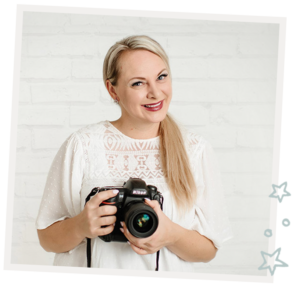
I'm
Lisa DiGeso
I’m on a mission to create uplifting online experiences for photographers ready to elevate their art, their business and their mindset.(...and have fun along the way!)

